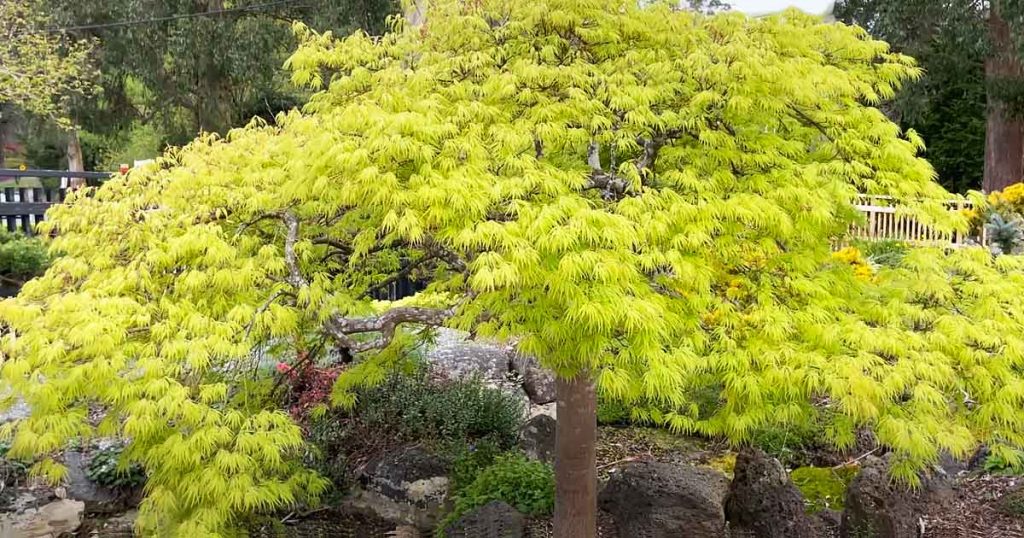Grown for the attractive foliage and elegant growth habit weeping Japanese Maple Trees can be grown in the garden or a container.
These are a deciduous maple tree, available in a range of sizes including dwarf types and one of the most popular small weeping trees.

These maples are varieties of Acer palmatum var. dissectum. The finely dissected lacy leaves and gently weeping branches range in colour from green through to a range of reds.
Care is easy in the right climate zone which is generally USDA Zones 5 to 8.
How to grow Weeping Japanese Maple Trees
Nearly all of these trees are sold a grafted trees. The specific variety being grafted to a stronger rootstock.
This grafting process means that the height the buy the tree will be close to its final height. The tree will spread outwards and a just a little upwards.
- Position
Choose a position in full sun to a a little afternoon shade. A position sheltered form hot drying winds is recommended. Full sun can be the cause of leaf burn and drying, deep shade will cause a poor growth habit. - Soil
A deep soil with good drainage is best. Dig in some aged cow manure and organic material before planting. - Watering
Japanese Maples do not perform well in hot dry conditions, so watering during summer will be needed in some soils and climate zones. A good layer of mulch around your Weeping Japanese Maple will help maintain a cool moist root run. - Fertilizer
A low release organic fertilizer once a year will help promote good healthy growth. A liquid seaweed fertilizer when planting will help establish root growth.
Pruning Weeping Japanese Maple Trees
It is often said that pruning is not required, however as these plants are grafted from a ‘sport’ they are not a naturally occurring tree.
This means that the weeping growth can become overcrowded causing congestion and a dense bushy blob look. For a better looking tree, pruning is required.
We suggest watching our video on pruning Japanese Maples for a detailed explanation.

